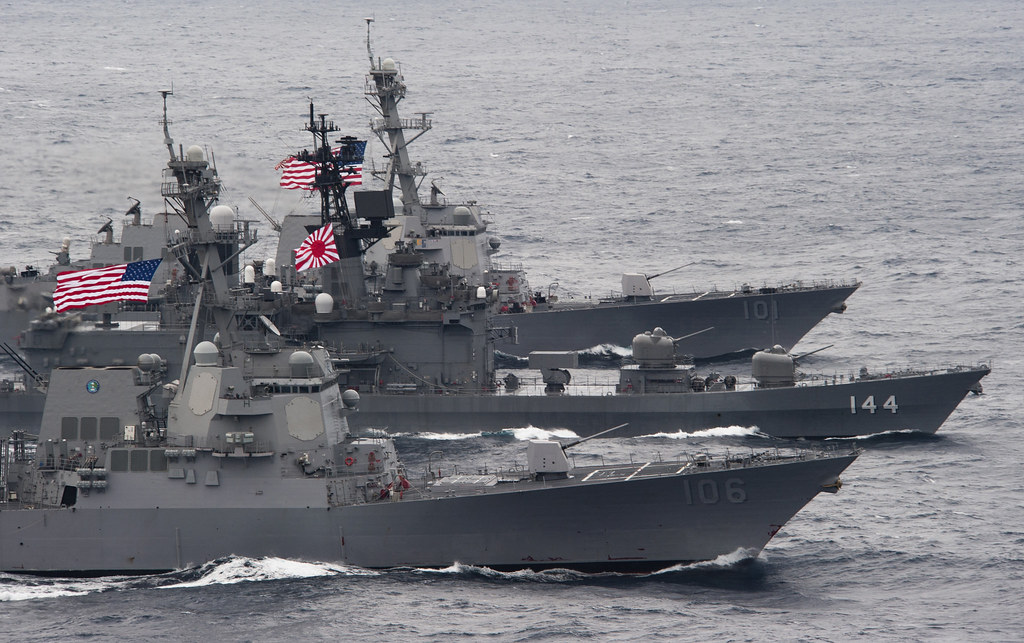 |
| Image by Flickr user: Official U.S. Navy Page |
By Mina Pollmann
Japan is becoming more involved in the South China Sea disputes through increased outreach to Southeast Asian partners.
In the 1970s, when Japan first sought to craft a foreign policy identity independent of the U.S., it turned to Southeast Asia. Though Japanese Prime Minister Tanaka Kakuei’s 1974 trip was greeted with protests, relations quickly improved with the 1977 promulgation of the Fukuda Doctrine, which promised that Japan would never again become a military power. Since then, Japan has been seen positively in Southeast Asia as a mentor and constructive partner.
However, despite this reservoir of soft power and major economic clout in the region, Japan has only been able to exercise marginal influence and has had difficulty being taken seriously. Part of the reason is that the U.S. remains the ultimate guarantor of security and stability in the region. And while the overall U.S. role will not change any time soon, regional dynamics are in flux as Japan develops a more robust foreign policy that seeks to promote Japanese interests and project influence abroad — starting in Southeast Asia, where disputes over islands in the South China Sea have attracted international attention.
Japan is interested in the South China Sea disputes gripping Southeast Asia for two main reasons. First, any tension in these waters could disrupt the free flow of traffic through critical sea lines, which are vital for resource-poor Japan’s economy and survival. Second, Japanese officials are closely monitoring how China handles these island disputes to try to discern how China might try to deal with Japan in their ongoing dispute over the Senkaku/Diaoyu Islands in the East China Sea.
Read the full story at The Diplomat
